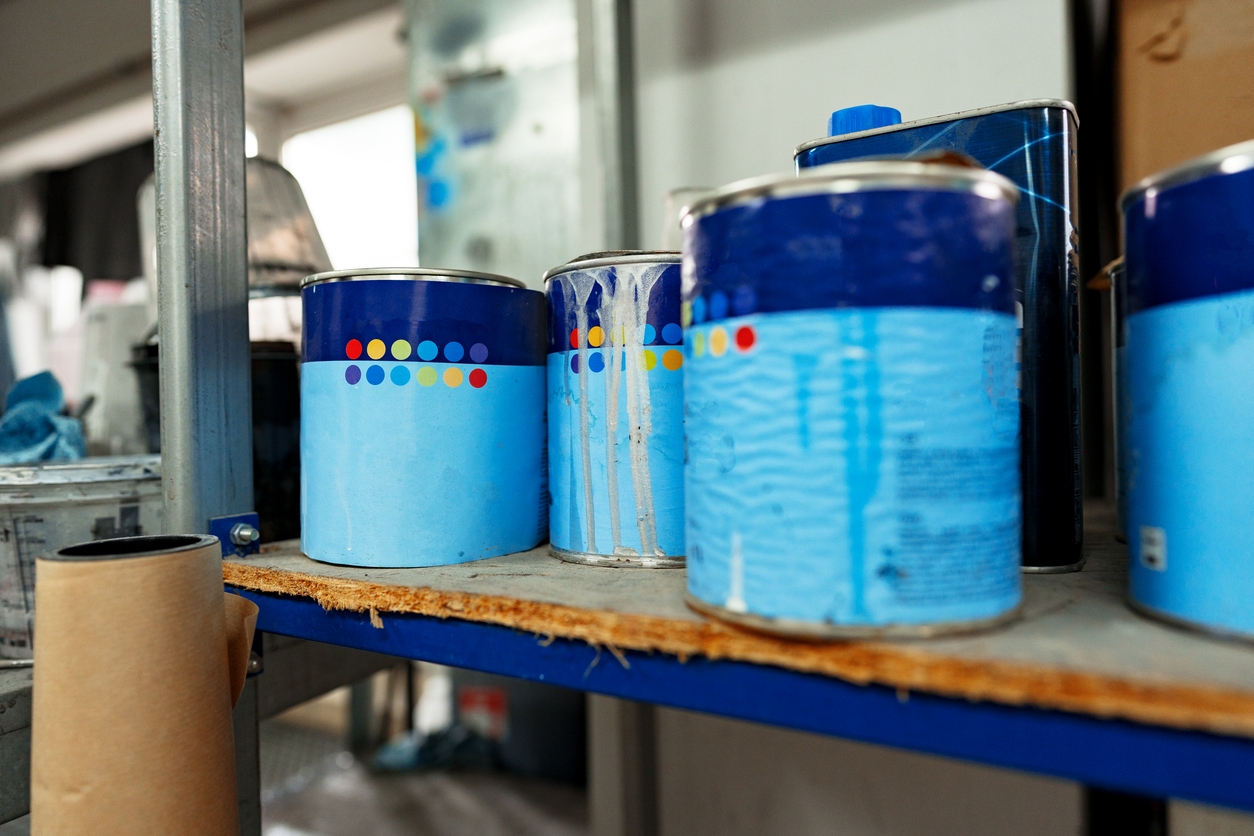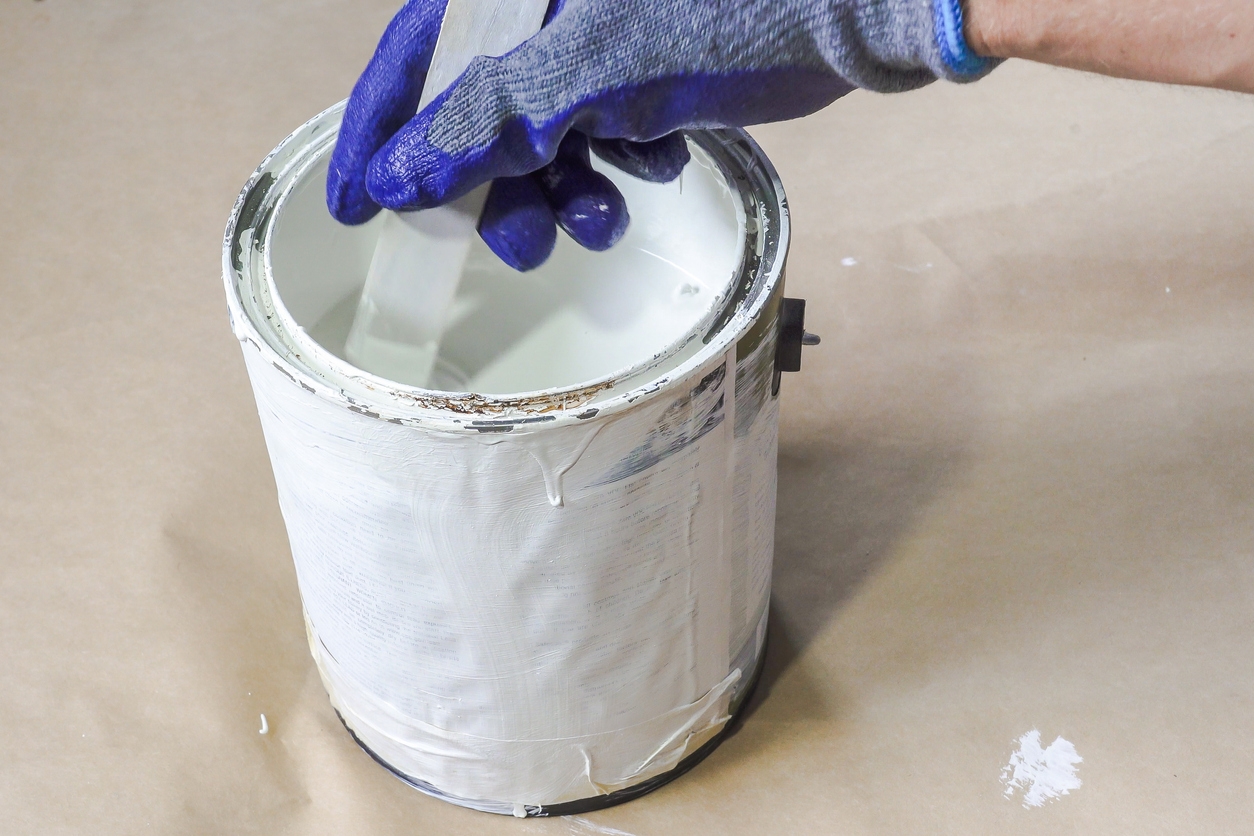You may be tackling a vinyl or aluminum siding painting project, refreshing a front door and other home projects undertaken by Pleasant Hill, CA homeowners. When it comes to house painting, one of the common dilemmas is, “What am I going to do with leftover paint?”
Deciding whether to keep or dispose of it can impact future touch-ups, storage space, and environmental health. Understanding how to handle leftover paint properly is crucial. It ensures you can effectively use the paint for future projects, store it safely, and dispose of it in an environmentally friendly manner.
This post will guide you on the best practices for dealing with leftover paint, including storage tips, creative reuse ideas, and proper disposal methods.
Reasons to keep leftover paint
Keeping leftover paint can be beneficial for several reasons:
Touch-ups and repairs
- Addressing minor damages: Leftover paint is handy for fixing scratches, scuffs, and small chips that may occur over time, ensuring your walls look fresh and well-maintained.
- Matching original color: Using the same paint ensures that touch-ups blend seamlessly with the original finish, avoiding the hassle of color matching or repainting entire sections.
Future projects
- Using leftover paint for small DIY projects: Leftover paint can be used creatively for various DIY projects, such as painting furniture, frames, or other home decor items, adding a personalized touch to your space.
- Coordinating decor with the existing color scheme: Consistent use of the same paint color can help maintain a cohesive look throughout your home, making it easier to match new decor elements with your existing color palette.
Cost-effectiveness
- Saving money on future purchases: Using leftover paint for touch-ups or small projects saves you money you would have otherwise spent on purchasing new paint.
- Reducing waste: Utilizing leftover paint helps reduce waste, making it an environmentally friendly option by minimizing the disposal of unused materials.
Proper storage of leftover paint
Selecting the right container
- Using original cans: If the original paint can is still in good condition and has enough paint left to maintain a tight seal, it’s best to store the paint in its original container. Doing so helps retain the label with essential information like color and finish.
- Transferring to smaller containers: Transfer leftover paint to a smaller airtight container to prevent drying and forming a “skin” on its surface.
Sealing the container properly
- Creating an airtight seal: Before sealing, be sure to close the lid securely by pressing it down with a rubber mallet or placing a piece of plastic wrap under it. This will prevent air from entering.
- Preventing skin formation: Pour a small amount of water, mineral spirits, or a specialized paint preservative on top of the paint before sealing the container. It creates a barrier that reduces skin formation.
Storing in a suitable environment
- Ideal temperature and humidity levels: Store paint in a cool, dry place between 60-80°F (15 and 27°C). Avoid areas with high humidity to prevent metal cans from rusting.
- Avoiding extreme temperatures and direct sunlight: Keep paint away from freezing temperatures, which can cause separation and damage. Also, avoid storing in direct sunlight or near heat sources, which can cause the paint to thicken or dry out.
How long can the paint be stored?
Shelf life of different types of paint
Latex vs. oil-based paint:
- Latex paint typically lasts 2-10 years when properly sealed and stored. It is water-based, which makes it less prone to spoilage than oil-based paints.
- Oil-based paint generally has a longer shelf life of up to 15 years if unopened. Once opened, its lifespan can decrease significantly, especially if not stored correctly.
Signs paint has gone bad:
- Consistency: Paint that has thickened, hardened, or developed a chunky texture is likely unusable.
- Smell: A sour or rancid odor indicates bacterial growth, suggesting the paint is spoiled.
- Separation: While some separation is normal, extensive separation or the inability to mix the components back together properly can mean the paint has gone bad.
Tips for extending paint shelf life
Using additives and stabilizers:
- Additives like biocides can prevent mold and bacteria growth.
- Stabilizers can help maintain paint’s consistency and keep it from separating over time.
Regularly checking stored paint:
- Inspect paint cans every few months to ensure they are still sealed tightly and there are no signs of spoilage.
- Stir the paint to check for consistency and proper mixing. If it mixes well and maintains its original texture and color, it is likely still good to use.
By following these guidelines, you can maximize the shelf life of your paint and avoid the waste and inconvenience of spoiled paint.
Safe disposal of leftover paint
When and why to dispose of paint
- Expired paint: Dispose of paint that has surpassed its shelf life, as it may no longer be effective or safe to use.
- Inadequate storage conditions: Paint stored improperly (e.g., in extreme temperatures) can degrade and become unusable, necessitating disposal.
Environmentally-Friendly Disposal Methods
- Local hazardous waste programs: Many communities have designated programs for safely disposing of hazardous materials like paint.
- Paint recycling centers: Some areas have specialized centers that recycle paint and convert paint into usable products.
Donating or giving away leftover paint
- Community projects and charities: Many community projects and charitable organizations gladly accept paint donations for their activities.
- Online platforms for sharing materials: Websites and social media groups can help you find individuals or groups needing paint, facilitating reuse.
Alternatives to storing leftover paint
Buying smaller quantities
- Estimating the right amount of paint for your project: Carefully measure the area to be painted and calculate the required amount of paint. Doing so reduces waste and the need to store leftovers.
- Custom mixing small batches: Many hardware stores offer custom mixing services, allowing you to purchase smaller quantities tailored to your specific project needs.
Using paint calculators
- Tools and apps for precise measurements: Utilize online paint calculators and mobile apps to determine the exact amount of paint needed for your project. These tools consider your room size, the required number of coats, and surface texture.
Returning unused paint to the store
- Policies on returns and exchanges: Check the store’s return policy before purchasing. Some retailers accept returns of unopened paint, allowing you to get a refund or exchange, which helps avoid storing excess paint at home.
Conclusion
Properly managing leftover paint is crucial for environmental protection and personal safety. As you finish your projects, ensure unused paint is stored correctly, recycled, or donated.
Final thoughts: Responsible paint management benefits both the environment and your community. Act now to make a positive impact.
For professional assistance, call Custom Painting at 925-686-0903 or fill out this online contact form today. Our qualified team of paint experts is here to help with your projects.



